


























See Also
See Again
© Getty Images
0 / 27 Fotos
Acraman Crater, Australia
- Created by an asteroid impact 590 million years ago, the Acraman Crater in South Australia is marked by Lake Acraman. This satellite image shows the lake, which sits in the center of the 40-km (25 mi) crater.
© Getty Images
1 / 27 Fotos
Karakul Crater, Tajikistan
- Karakul is the name of the lake set within a large 52-km (32 mi) impact crater in the Tajik National Park. The structure, seen here from satellite, dates back 25 million years.
© Getty Images
2 / 27 Fotos
Wolfe Creek Crater, Australia
- Another astonishingly well-preserved impact site, Wolfe Creek Crater in Western Australia is about 875 m (2,871 ft) in diameter, and 60 m (200 ft) from rim to floor. The crater is estimated to be less than 120,000 years old and forms the centerpiece of the the Wolfe Creek Meteorite Crater National Park.
© Shutterstock
3 / 27 Fotos
Sudbury Basin, Canada
- The Sudbury Basin in Ontario is approximately 10–15 km (6.2–9.3 mi) in diameter and was formed over 1.8 billion years ago. The basin is pictured in a screenshot from NASA's globe software WorldWind.
© Public Domain
4 / 27 Fotos
Tenoumer Crater, Mauritania
- The dramatic near-circular rim of the Tenoumer Crater is one of the distinguishing geological features of the western Sahara Desert landscape of Mauritania. This photograph by Michael Dennig perfectly captures the crater's proportions.
© Public Domain
5 / 27 Fotos
Henbury Meteorites Conservation Reserve, Australia
- No less than 14 craters make up the Henbury Meteorites Conservation Reserve in Australia's Northern Territory. They are believed to have been formed when a fragmented meteorite hit the Earth's surface. The largest crater (thought to be a coalescence of two smaller craters) is 217 m (733 ft) long, 111 m (366 ft) wide, and 15 m (50 ft) deep.
© Shutterstock
6 / 27 Fotos
Bosumtwi Crater, Ghana
- Lake Bosumtwi, the only natural lake in Ghana, is sunk into an ancient impact crater located south-east of Kumasi. The Ashanti consider Bosumtwi a sacred lake.
© Getty Images
7 / 27 Fotos
Meteor Crater, USA
- Meteor Crater, also called Barringer Crater, is a massive meteorite impact crater sited near Flagstaff, Arizona. One of the best preserved craters of its kind on Earth, this extraordinary natural wonder is some 1,200 m (3,900 ft) in diameter and approximately 170 m (560 ft) deep.
© Shutterstock
8 / 27 Fotos
Manicouagan Reservoir, Canada
- The Manicouagan Reservoir in central Quebec is an annular lake formed as a result of a meteor strike 214 million years ago. The lake island in its center is known as René-Levasseur Island. The entire structure is often referred to as "the eye of Quebec."
© Getty Images
9 / 27 Fotos
Vredefort Crater, South Africa
- More than 300 km (190 mi) across when it was formed, the Vredefort Crater in South Africa's Free State province is the largest verified impact cater on Earth. Pictured is a satellite image of the Vredefort Dome, the crater's center.
© Getty Images
10 / 27 Fotos
Kaali Crater, Estonia
- Kaali is the collective name for a cluster of nine meteorite crater lakes in the village of Kaali on the Estonian island of Saaremaa. The cluster formation is dated to shortly after 1530–1450 BCE.
© Shutterstock
11 / 27 Fotos
Gosses Bluff Crater, Australia
- Located in the southern Northern Territory, the impressive Gosses Bluff meteor crater is 5 km (3 mi) in diameter, with a rim height of 200 m (656 ft). The site is known as Tnorala to the Western Arrernte Aboriginal people, and is a sacred place.
© Shutterstock
12 / 27 Fotos
Popigai Crater, Russia
- Located in Siberia, the Popigai Crater was created approximately 35 million years ago. The top left of the satellite image shows the eastern side of the crater, which is 100 km (62 mi) in diameter.
© Getty Images
13 / 27 Fotos
El'gygytgyn Crater, Russia
- Lake El'gygytgyn sits inside a small asteroid impact crater in north-east Siberia within the Arctic Circle, and is around 3.6 million years old.
© Getty Images
14 / 27 Fotos
Chesapeake Bay impact structure, USA
- The slumping of sediment over the rubble of a meteor strike around 35 million years helped shape Chesapeake Bay on America's eastern seaboard. Pictured is a portion of the impact structure in Virginia.
© Getty Images
15 / 27 Fotos
Morasko Meteorite Nature Reserve, Poland
- The Morasko Meteorite Nature Reserve nestles in woodland near the city of Poznań. Seven craters can be inspected, the largest of which has a diameter of about 100 m (328 ft) and is about 11 m (36 ft) deep.
© Shutterstock
16 / 27 Fotos
Lonar Crater, India
- Lonar Lake in Maharashtra state sits in a crater formed as a result of a meteorite impact that occurred between 35,000 and 50,000 years ago.
© Getty Images
17 / 27 Fotos
Middlesboro Crater, USA
- The Middlesboro Crater in Kentucky is named after the town that today occupies much of the crater, which is 5 km (3 mi) wide and estimated to be less than 300 million years old.
© Shutterstock
18 / 27 Fotos
Mistastin Crater, Canada
- Mistastin Crater was created 36 million years ago by a violent asteroid impact in Canada's Labrador province. This satellite image clearly shows Mishta-minishtikᐡ, the lake's bow-shaped central island.
© Getty Images
19 / 27 Fotos
Tswaing Crater, South Africa
- Scenic Tswaing Crater is found north-west of Pretoria and is estimated to be anywhere between 220,000 and 52,000 years old. Interestingly, stone tools from the Middle Stone Age show that the crater was regularly visited by people from as far back as 100,000 years ago.
© Shutterstock
20 / 27 Fotos
Araguainha impact structure, Brazil
- Look closely and you can recognize the circular, 40-km (25 mi) diameter outline of the Araguainha impact structure, which straddles the border of Mato Grosso and Goiás states. This is the largest known impact crater in South America.
© Getty Images
21 / 27 Fotos
Nördlinger Ries, Germany
- The large circular depression in western Bavaria and eastern Baden-Württemberg is known as the Nördlinger Ries, a huge impact crater that served as a location to train Apollo 14 astronauts. Pictured is a view of Nördlinger Ries' southern wooded rim.
© Getty Images
22 / 27 Fotos
Haughton Crater, Canada
- Haughton Crater, located on Devon Island, Nunavut, is estimated at around 39 million years old, formed after an asteroid impact that left a crater about 23 km (14 mi) in diameter.
© Getty Images
23 / 27 Fotos
Lappajärvi Crater, Finland
- Lake Lappajärvi in Finland's South Ostrobothnia region fills the 23-km (14 mi) wide, partly eroded meteorite impact crater of Lappajärvi. The crater is estimated to be 76 million years old.
© Shutterstock
24 / 27 Fotos
Chicxulub Crater, Mexico
- The Chicxulub Crater is buried under the Yucatán Peninsula, the result of a cataclysmic asteroid impact around 66 million years ago that wiped out the dinosaurs. In this NASA image of the upper left portion of the peninsula, a faint arc of dark green is visible, indicating the remnants of the impact crater, the second-largest in the world.
© Getty Images
25 / 27 Fotos
Tunguska event, Russia
- What happens when a meteorite breaches the Earth's atmosphere but doesn't hit the ground and instead explodes mid-air? That's exactly what happened in 1908 near the Podkamennaya Tunguska river. While no crater is visible, an air burst flattened an estimated 80 million trees over an area of 2,150 km2 (830 sq mi) of forest. Sources: (NASA) (National Park Service) (Smithsonian Magazine) (Geopark Ries) (EarthSky) See also: Discover some of the world's most dangerous volcanoes
© Getty Images
26 / 27 Fotos
© Getty Images
0 / 27 Fotos
Acraman Crater, Australia
- Created by an asteroid impact 590 million years ago, the Acraman Crater in South Australia is marked by Lake Acraman. This satellite image shows the lake, which sits in the center of the 40-km (25 mi) crater.
© Getty Images
1 / 27 Fotos
Karakul Crater, Tajikistan
- Karakul is the name of the lake set within a large 52-km (32 mi) impact crater in the Tajik National Park. The structure, seen here from satellite, dates back 25 million years.
© Getty Images
2 / 27 Fotos
Wolfe Creek Crater, Australia
- Another astonishingly well-preserved impact site, Wolfe Creek Crater in Western Australia is about 875 m (2,871 ft) in diameter, and 60 m (200 ft) from rim to floor. The crater is estimated to be less than 120,000 years old and forms the centerpiece of the the Wolfe Creek Meteorite Crater National Park.
© Shutterstock
3 / 27 Fotos
Sudbury Basin, Canada
- The Sudbury Basin in Ontario is approximately 10–15 km (6.2–9.3 mi) in diameter and was formed over 1.8 billion years ago. The basin is pictured in a screenshot from NASA's globe software WorldWind.
© Public Domain
4 / 27 Fotos
Tenoumer Crater, Mauritania
- The dramatic near-circular rim of the Tenoumer Crater is one of the distinguishing geological features of the western Sahara Desert landscape of Mauritania. This photograph by Michael Dennig perfectly captures the crater's proportions.
© Public Domain
5 / 27 Fotos
Henbury Meteorites Conservation Reserve, Australia
- No less than 14 craters make up the Henbury Meteorites Conservation Reserve in Australia's Northern Territory. They are believed to have been formed when a fragmented meteorite hit the Earth's surface. The largest crater (thought to be a coalescence of two smaller craters) is 217 m (733 ft) long, 111 m (366 ft) wide, and 15 m (50 ft) deep.
© Shutterstock
6 / 27 Fotos
Bosumtwi Crater, Ghana
- Lake Bosumtwi, the only natural lake in Ghana, is sunk into an ancient impact crater located south-east of Kumasi. The Ashanti consider Bosumtwi a sacred lake.
© Getty Images
7 / 27 Fotos
Meteor Crater, USA
- Meteor Crater, also called Barringer Crater, is a massive meteorite impact crater sited near Flagstaff, Arizona. One of the best preserved craters of its kind on Earth, this extraordinary natural wonder is some 1,200 m (3,900 ft) in diameter and approximately 170 m (560 ft) deep.
© Shutterstock
8 / 27 Fotos
Manicouagan Reservoir, Canada
- The Manicouagan Reservoir in central Quebec is an annular lake formed as a result of a meteor strike 214 million years ago. The lake island in its center is known as René-Levasseur Island. The entire structure is often referred to as "the eye of Quebec."
© Getty Images
9 / 27 Fotos
Vredefort Crater, South Africa
- More than 300 km (190 mi) across when it was formed, the Vredefort Crater in South Africa's Free State province is the largest verified impact cater on Earth. Pictured is a satellite image of the Vredefort Dome, the crater's center.
© Getty Images
10 / 27 Fotos
Kaali Crater, Estonia
- Kaali is the collective name for a cluster of nine meteorite crater lakes in the village of Kaali on the Estonian island of Saaremaa. The cluster formation is dated to shortly after 1530–1450 BCE.
© Shutterstock
11 / 27 Fotos
Gosses Bluff Crater, Australia
- Located in the southern Northern Territory, the impressive Gosses Bluff meteor crater is 5 km (3 mi) in diameter, with a rim height of 200 m (656 ft). The site is known as Tnorala to the Western Arrernte Aboriginal people, and is a sacred place.
© Shutterstock
12 / 27 Fotos
Popigai Crater, Russia
- Located in Siberia, the Popigai Crater was created approximately 35 million years ago. The top left of the satellite image shows the eastern side of the crater, which is 100 km (62 mi) in diameter.
© Getty Images
13 / 27 Fotos
El'gygytgyn Crater, Russia
- Lake El'gygytgyn sits inside a small asteroid impact crater in north-east Siberia within the Arctic Circle, and is around 3.6 million years old.
© Getty Images
14 / 27 Fotos
Chesapeake Bay impact structure, USA
- The slumping of sediment over the rubble of a meteor strike around 35 million years helped shape Chesapeake Bay on America's eastern seaboard. Pictured is a portion of the impact structure in Virginia.
© Getty Images
15 / 27 Fotos
Morasko Meteorite Nature Reserve, Poland
- The Morasko Meteorite Nature Reserve nestles in woodland near the city of Poznań. Seven craters can be inspected, the largest of which has a diameter of about 100 m (328 ft) and is about 11 m (36 ft) deep.
© Shutterstock
16 / 27 Fotos
Lonar Crater, India
- Lonar Lake in Maharashtra state sits in a crater formed as a result of a meteorite impact that occurred between 35,000 and 50,000 years ago.
© Getty Images
17 / 27 Fotos
Middlesboro Crater, USA
- The Middlesboro Crater in Kentucky is named after the town that today occupies much of the crater, which is 5 km (3 mi) wide and estimated to be less than 300 million years old.
© Shutterstock
18 / 27 Fotos
Mistastin Crater, Canada
- Mistastin Crater was created 36 million years ago by a violent asteroid impact in Canada's Labrador province. This satellite image clearly shows Mishta-minishtikᐡ, the lake's bow-shaped central island.
© Getty Images
19 / 27 Fotos
Tswaing Crater, South Africa
- Scenic Tswaing Crater is found north-west of Pretoria and is estimated to be anywhere between 220,000 and 52,000 years old. Interestingly, stone tools from the Middle Stone Age show that the crater was regularly visited by people from as far back as 100,000 years ago.
© Shutterstock
20 / 27 Fotos
Araguainha impact structure, Brazil
- Look closely and you can recognize the circular, 40-km (25 mi) diameter outline of the Araguainha impact structure, which straddles the border of Mato Grosso and Goiás states. This is the largest known impact crater in South America.
© Getty Images
21 / 27 Fotos
Nördlinger Ries, Germany
- The large circular depression in western Bavaria and eastern Baden-Württemberg is known as the Nördlinger Ries, a huge impact crater that served as a location to train Apollo 14 astronauts. Pictured is a view of Nördlinger Ries' southern wooded rim.
© Getty Images
22 / 27 Fotos
Haughton Crater, Canada
- Haughton Crater, located on Devon Island, Nunavut, is estimated at around 39 million years old, formed after an asteroid impact that left a crater about 23 km (14 mi) in diameter.
© Getty Images
23 / 27 Fotos
Lappajärvi Crater, Finland
- Lake Lappajärvi in Finland's South Ostrobothnia region fills the 23-km (14 mi) wide, partly eroded meteorite impact crater of Lappajärvi. The crater is estimated to be 76 million years old.
© Shutterstock
24 / 27 Fotos
Chicxulub Crater, Mexico
- The Chicxulub Crater is buried under the Yucatán Peninsula, the result of a cataclysmic asteroid impact around 66 million years ago that wiped out the dinosaurs. In this NASA image of the upper left portion of the peninsula, a faint arc of dark green is visible, indicating the remnants of the impact crater, the second-largest in the world.
© Getty Images
25 / 27 Fotos
Tunguska event, Russia
- What happens when a meteorite breaches the Earth's atmosphere but doesn't hit the ground and instead explodes mid-air? That's exactly what happened in 1908 near the Podkamennaya Tunguska river. While no crater is visible, an air burst flattened an estimated 80 million trees over an area of 2,150 km2 (830 sq mi) of forest. Sources: (NASA) (National Park Service) (Smithsonian Magazine) (Geopark Ries) (EarthSky) See also: Discover some of the world's most dangerous volcanoes
© Getty Images
26 / 27 Fotos
Meteorite and asteroid impact craters found on Earth
These natural wonders were formed millions of years ago
© Getty Images
Right here on Earth are some outstanding examples of meteorite and asteroid impact craters and other visible impact structures. Click through and let these amazing crater destinations make an impact on you.
RECOMMENDED FOR YOU


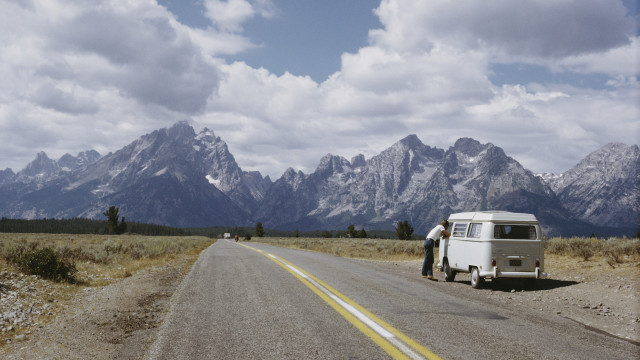
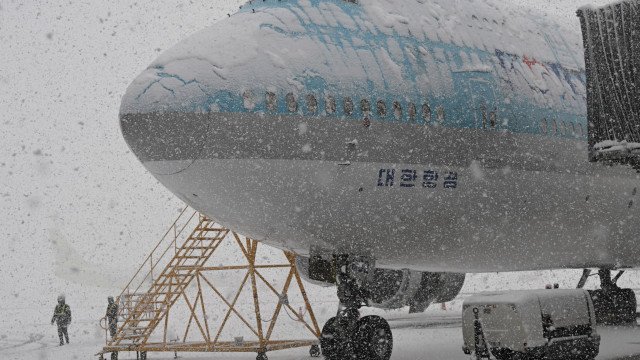
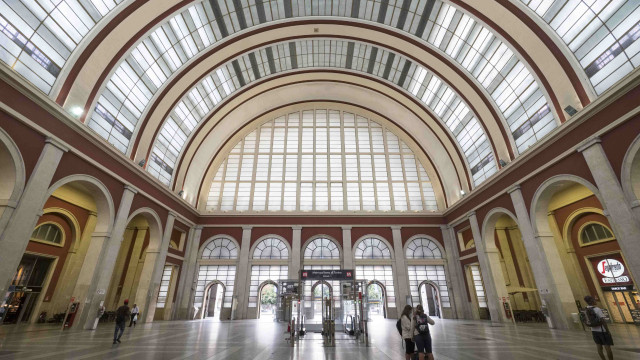

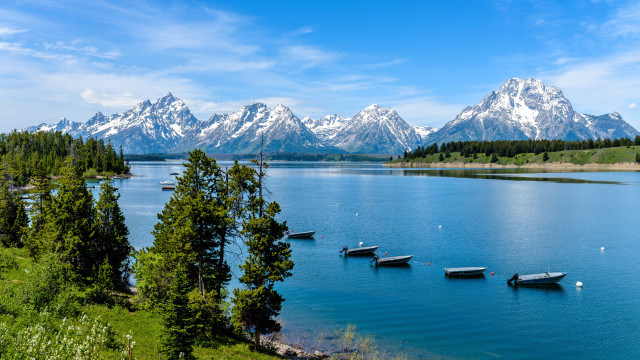



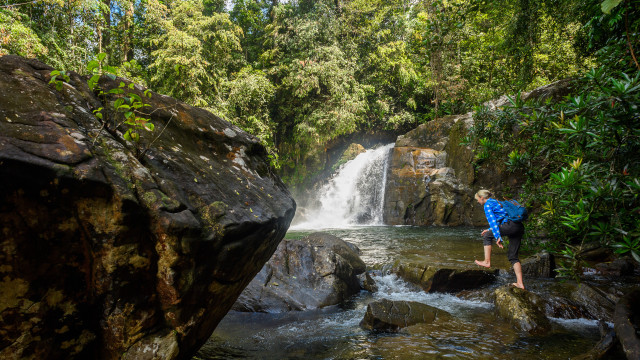















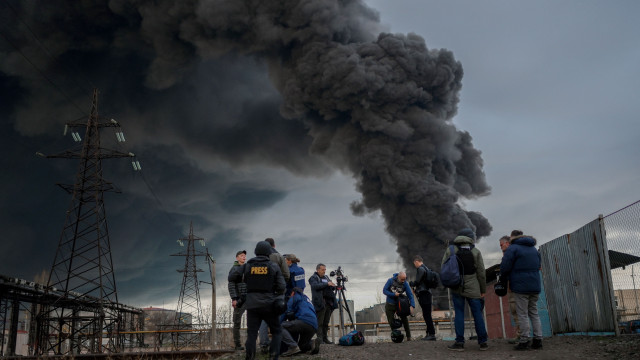
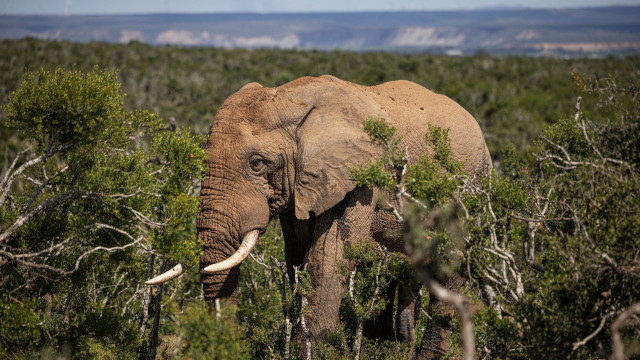



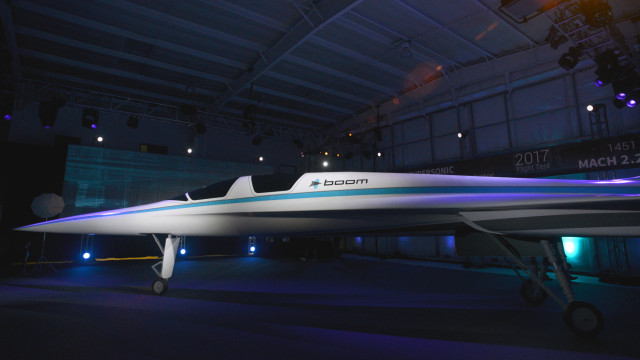

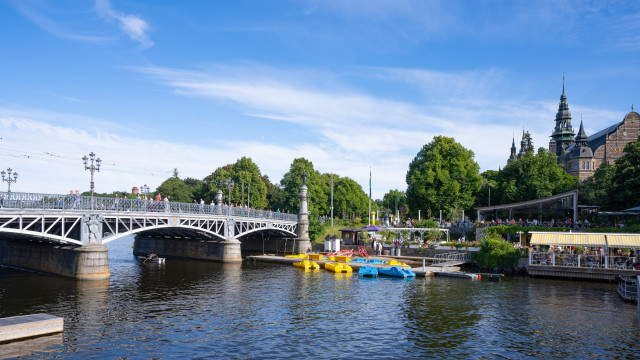


MOST READ
- Last Hour
- Last Day
- Last Week








